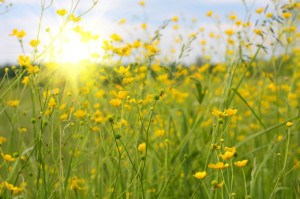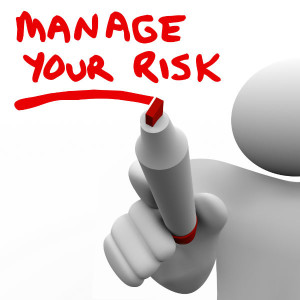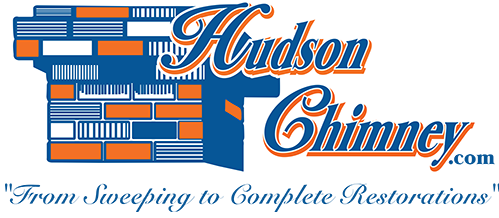by Mark Hudson | Apr 8, 2014 | chimney maintenance, fire safety
Let’s Talk Creosote Removal
Have you noticed any black particles and burnt-like marks on your chimney walls? You might think it’s just stained because of the smoke, however these should not be underestimated, because creosote buildup can become quite dangerous.

Don’t forget to have your chimney cleaned and inspected at least once a year to maximize output and safety.
What is that black substance coating your chimney walls? It’s called creosote, a chemical byproduct of open combustion from burning either hardwood or softwood. These two types of wood usually need to be seasoned and dried up to at least six months so that only minimal production of creosote is made. This means that creosote production is inevitable and the biggest dilemma once creosote has built up in your chimney is the probability of chimney fires occurring.
So because we can’t prevent it from forming, the next best thing is to make sure that it is regularly removed. When you talk about creosote buildup, there are three levels. Thankfully our CSIA-licensed chimney sweeps here at Hudson Chimney are ready to take full control and assess, clean and remove creosote.
Level I
The first stage is usually called soot. It’s still flaky and dusty like ash only that it’s found in the chimney walls. It is the slightest form with maybe a layer or two and can easily be removed by a chimney brush. We usually just brush it off. The process takes very little time but before the removal process is done, we first inspect and do a little cleaning.
Level II
The second stage of creosote already has tar-like features. It is now harder to remove and we usually need to use stiffers or special kinds of brushes. By now, the layers are getting thicker. Removing it will take more time than usual. During this level, creosote is building up to be more flammable and more dangerous. Nonetheless, it can still be removed.
Level III
The last and final stage is the most difficult to remove and the most dangerous. It is no longer called creosote but it is now called glaze. It is thick, totally black and is like candle wax; a hard, glossy, dark mass. By now, the chance of chimney fires occurring is greater.
To prevent this, constant cleaning and removing of creosote is the ultimate key. Once creosote starts to build up, contact Hudson Chimney so that we can monitor and lessen the problem. Give us a call and we’ll tell you more!
by Mark Hudson | Mar 25, 2014 | chimney maintenance
Think of your chimney flue sort of like a drinking straw — its job is to pull what’s inside of it up, and out. And just like a straw, imperfections can quickly stop it from doing that job. Ever struggled with a straw that had a crack in it? A chimney with a damaged flue liner behaves in a similar way — the chimney’s draft can pull and pull, but cracks and gaps fight against the upward draw.

Your chimney should be free of any kind of blockage — otherwise you’ll have big problems to deal with. See to it that you have your chimney inspected and swept as scheduled.
If you’ve ever had a way-too-thick milkshake, you know how your flue responds to a blockage. Once again, try as it might, draft can’t pull the air and gases inside your chimney up, because something’s closing off the passage and hampering upward movement.
Blockages are a serious issue — depending on what it is that’s blocking your flue, you could end up with anything from a smoky living room to a fire hazard or toxic carbon monoxide leaking into your home.
During your annual chimney inspection, Hudson Chimney technicians always check your flue for blockages or potential blockages. But between inspections, if you’re noticing draft issues — from smoke to fireplace stains — give us a call. We can check to see if your flue is blocked, and make the necessary repairs to have your chimney properly venting again.
Some Of The Most Common Chimney Blockages:
Every situation is different, but there are certain types of blockages that we routinely come across at Hudson Chimney:
Nesting Animals Brought Flammable Debris Into Your Flue
Why It Happened: In most cases, animals move into your chimney a) because it’s an attractive place to nest and b) because nothing was stopping them from doing so. If your chimney isn’t closed off to birds and other visitors, they take that as a vacancy sign, and move right in. Their nests and other debris can quickly block your flue and affect your draft, and since nesting materials are generally flammable, they can also create a fire hazard.
What Hudson Chimney Can Do: install a quality chimney cap. Chimney caps help keep moisture out of your chimney, but they also lock animals, and their nests, out. If you want or need something special, we also install custom chimney caps!
Creosote Buildup Is Closing Off Your Flue
Why It Happened: Creosote buildup is a natural part of using a wood-burning heating appliance. Heated air, gases and particles produced through the combustion of wood rise up in the flue, then condense into a liquid as they reach the cooler flue walls. That condensation layers over time and with use, and you have creosote buildup. The longer you go without a professional chimney sweeping, the more creosote buildup you have — and it can get considerable enough to block your flue and affect your draft.
What Hudson Chimney Can Do: properly sweep your chimney, and help you develop a regular chimney sweeping schedule that keeps your flue clear and venting the way it should.
Damaged Flue Liner Pieces Have Fallen Into Your Flue
Why It Happened: Many older chimneys have flue liners made out of terra cotta clay tiles. Although those tiles can be pretty durable, it’s not uncommon for cracks to develop. If those cracks widen enough for pieces of tile to break off, they can fall into the flue and create a blockage. Cracked flue liner tiles are among the things Hudson Chimney technicians look for during a chimney inspection — and that’s an important part of what we do, because a damaged flue liner affects not only your draft, but your chimney’s ability to protect nearby combustible building materials from high heat.
What Hudson Chimney Can Do: assess the damage in your chimney liner, remove the blockage and bring your liner back to proper working order. That can include repairing your existing liner using HeatShield products or installing a new flue liner, depending on the state of your liner and your chimney.
Whether you’re having trouble with your chimney or just want to stay on top of regular maintenance to keep trouble away, Hudson Chimney is here to help. If you have any questions, or would like to make an appointment with our CSIA-certified technicians, give us a call!
by Mark Hudson | Mar 12, 2014 | chimney maintenance

It’s easy to forget about your chimney the moment spring comes to life. But you shouldn’t. Spring is the best time to give proper care to your chimney.
No matter how hard you try, you always seem to forget something when you are making your to do list for the upcoming spring season. You want to make sure you clean the house from top to bottom, begin the gardening, and plan for the summer vacation. Nowhere in this list, does taking care of your chimney’s maintenance fit in. This maintenance must be done and in a timely fashion to protect your family and your home’s safety. Call Hudson Chimney today to schedule your appointment.
Do you really need more than one chimney sweep?
It depends on your usage. If you are frequently using your fireplace, you may need two sweeps. This is because with an increase in burning, more creosote will be released. One chimney sweep should be done closer to burning season so that there is little time for anything to build up inside of the unit. The second should be done right after burning season to remove everything from the winter. You should always make sure your chimney sweep is Chimney Safety Institute of America (CSIA) certified. Since the spring season is also slower for chimney companies, you may be able to get a discount.
What are some common repairs that will need to be done?
Since winter storms can often time hurt your chimney’s structure, the spring season is when the repairs will usually begin. This is the time when weather warms up, but the wet season hasn’t kicked in. Your technician will know to check both the flashing and the rain caps.
You will also want to make sure that your chimney is sealed properly. After the unit freezes and thaws multiple times it will begin to crack and the caulk will begin to loosen. After the sweep and repairs, you should look into having the chimney waterproofed, especially if you live in a wet environment.
What do you do with the animals that may have gotten in your chimney?
Even though your first instincts are to panic, you should remain calm and give us a call. To keep both you and the animal safe, this should only be done by a professional. Animals will use your chimney for both nesting and storage, so having the required sweeps will remove all of their droppings. We also have experience removing carcasses. We’ll make sure there is nothing blocking your chimney.
by Mark Hudson | Jan 8, 2014 | chimney maintenance
Fungi are common practically on any surface where moisture is present. So it is no surprise that molds can easily find their way into the chimney. Most of the time, we don’t even know that they’re multiplying in the dark. But if left without any intervention, the accumulation of molds could have serious damaging effects to your household.
How Chimneys Can Breed Molds
The chimney is subjected to the ever changing seasons that it is no surprise at all that it is exposed to a lot of water and moisture. It does not only happen during the rainy seasons, but moisture can still build up in the chimney during humid summer days. And wherever there is moisture, molds can easily survive and thrive. They can reproduce up to the millions and still go unnoticed within the confines of the flue and make their way down to the fireplace. In addition, water can cause major structural damage to the masonry, creating cracks where more molds can reside.

Removing dangerous molds and waterproofing your chimney are two services we’ll be happy to provide you. This extends the life of your chimney and reduces the negative impact of molds in the flue.
These molds look harmless, but don’t be fooled! They can come in all shapes and sizes. Some may be fuzzy, others are slimy or flat. They create a certain discoloration to the surface where they are attached and this cannot be removed easily by plain soap and water. It is best to leave these pesky molds to the professionals who have the right equipment to deal with them.
Dangers of Chimney Molds
Molds can pose a serious health risk to the inhabitants of the house because they produce spores. When these spores travel down the chimney and enter the home, they circulate and become inhaled. The milder symptoms of illness due to mold exposure could be irritation on the skin or any mucous membrane. More severe conditions may affect the lungs and cause permanent damage if inhaled in very large amounts. So if several of your family members are starting to cough or are experiencing headaches and frequent congestion, aside from going to the doctor, it would be sensible to take a trip or give a call to a professional chimney sweep to eliminate the cause of this sickness. And if you have a family member with any kind of respiratory problem…this becomes even more urgent.
Taking Out the Chimney Molds
If you have a leaky chimney, go ahead and make an appointment with the experts at Hudson Chimney. Serving the Jacksonville, Florida area for more than 30 years, we hope to gain your confidence and take care of your chimney.. They will be able to deal with your chimney mold problem in a jiffy, targeting the mold and then repairing any cracks in the chimney that causes water to enter. They might also recommend waterproofing your chimney for long-term maintenance of its structure and functionality.
In the end, prevention is definitely better than spending thousands on medications and chimney repairs. Call Hudson Chimney to inspect your chimney every year. The small investment on your chimney will be worth the huge savings.
by Mark Hudson | Dec 27, 2013 | chimney maintenance
Is air coming into your home through the firebox? Does your house smell of smoke days after you burned a fire in your fireplace? Do you have a hard time either starting a fire or keeping the fire going once you’ve gotten it started? If you can answer yes to any of these questions, you could definitely have a problem with your chimney system’s draft. We can help you figure out how your drafting problem began in the first place, which can help you prevent similar problems from happening down the road.

A drafty chimney can cause smoke to enter the and circulate in the house.
Drafty Chimney Symptoms
There are many symptoms of a drafty chimney. Is your fire reluctant to start, and/or does smoke spill into the room at start-up? Does your firebox back-puff powerfully on windy days? Does smoke spill, to some degree, under all conditions? Does smoke spill at larger damper openings? Is the heat output from your fireplace too low? Are smoke odors persistent even when the fireplace isn’t in use? If you answered yes to one or more of the above-listed questions, you might have a drafty chimney. We suggest having your chimney inspected.
Drafty Chimney Remedies
Our CSIA-certified chimney sweeps can determine which, if any, of the afore-mentioned issues are impacting your home. There are numerous possible remedies depending on which problem (or combination of problems) is the culprit. Oftentimes, sweeping the chimney can take care of the issue, as even the slightest buildup inside your chimney can restrict airflow. Sealing leaks in the chimney is another possible remedy, depending on what is found during your inspection. Another quick fix would be installing or replacing your chimney cap; back-puffing problems during windy conditions point directly to this.
Poor Drafting Leads to Increased Levels of Harmful Gases
It is extremely important to deal with drafting problems as soon as you notice them, as ignoring it can have adverse affects on your health. These problems can cause combustion products to back up and enter your home leaving behind unpleasant and unsafe living conditions. Fixing your drafting problem will enable the harmful gases and smoke from the fire to properly exit your home through the chimney flue. Even though you may be able to alleviate most of the excess smoke in your home on your own, the health affects associated with a back draft compel you to consult with a chimney professional to ensure that your home is safe for you and everyone in it.
A little peace of mind can go a very long way. You’ll find that you are better able to enjoy that roaring fire fully knowing that you and your family are safer in your home. One of our CSIA-certified chimney sweeps can inspect your chimney system for you and can help fix your poor-drafting issue(s) once and for all. Don’t wait until it’s too late. Give us a call today!
by Mark Hudson | Dec 23, 2013 | chimney maintenance, fire safety, fireplaces
Say Goodbye to Your Chimney Blockages
Is your home’s safety one of your top priorities? Do you want to save yourself from spending thousands of unnecessary dollars on expensive repairs from damages you could have prevented? Well, we’ve got the answers that you’re looking for!
Since it’s the Holiday season, you are busy preparing your house for the coming festivities. This is also most likely the only time of the year when you get to check how your chimney is doing. Most of the problems of homeowners have something to do with chimney blockages. Here at Hudson Chimney the safety and well-being of our clients always come first, we want to give you a few trade secrets on identifying the culprits of these very common chimney blockages.

Has your fireplace started pouring smoke into your living room? You may have a blockage.
Creosote
You have probably heard this being mentioned in TV commercials and promotional ads. Creosote is basically the Diva and superstar amongst all the common chimney blockers. If you don’t know what it is, it’s a particular by-product of burning wood on your chimneys. It builds up on the sides of your flue system. If left unnoticed, Creosote may accumulate and this can definitely lead to flue (or house) fires. It is highly flammable.
Debris
Things such as trash, tree foliage, leaves and other debris both natural and otherwise are also one of the most common causes of blockage. You would be surprised what we find stuck on people’s chimneys during regular inspections. Most homeowners are barely aware of what gets stuck up their chimneys. But without a chimney cap, the wind can deposit lots of debris into your chimney.
Animals
Small birds, raccoons, squirrels and animals and bugs are also one of the famous chimney blockers out there. Not only do they cause problems due to that blockage, but most of these animals (those unable to get out) create a nasty and putrid smell that can enter and spread to your homes.
What we can advise everyone to do to save more money and prevent further damage from happening is to get your chimneys inspected and swept often. You can also opt to get a chase cover or a chimney cap. Hudson Chimney is well updated with the technology that would ensure your safety and would help you from spending too much. So don’t wait until your chimney gets clogged, give us a call now and we’ll gladly help you out!






